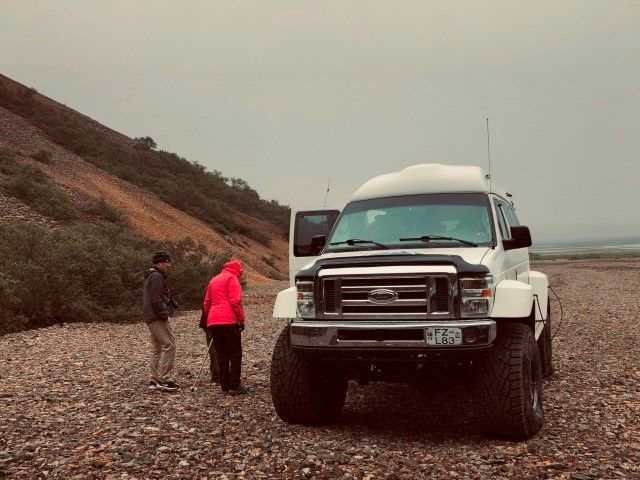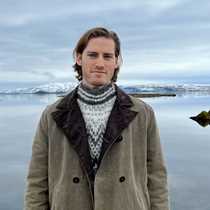We docked in the town of Djupivogur, pop. 670, in southeast Iceland for guests to disembark for daily expeditions around town or farther west along the coast. The area is known for wildlife—reindeer and various seabirds—as well as the biggest glacier in Iceland, Vatnajokull. Our guests met with local guides who took them to see the Jokulsarlon, the glacier lagoon; on a 4x4 truck tour into the highlands; to a black-sand beach; on a birdlife walking tour; and at last, on a strenuous hike around the Djupivogur area.
East Iceland is usually quite sunny while Reykjavik is usually quite cloudy, but today it was the other way around. Djupivogur welcomed us with very dense fog, which made the landscape all the more mysterious. We got in the 4x4s—monstrous trucks modified with huge tires that are deflated before crossing rivers or driving on snow. These trucks took us to remote highland areas of dramatic canyons and glacial rivers.
Next up was Jokulsarlon. The trip gave us a sense of the scale of Iceland since it took us roughly two hours by bus to get to the lagoon itself. The lagoon is filled with glacial meltwater from Vatnajokull. But since it sits below sea level, saltwater flows into it during high tide and makes the water partly saline. This is both good and bad. The saltwater causes a faster melting of the outlet glacier but also provides fishing opportunities for seals and various sea birds.
As evidence of the volcanically active south coast, black basalt sand covers the shores. In the area around Djupivogur, we spotted an array of birdlife—red-throated divers, great skuas, golden plovers, northern fulmars, northern wheatears, and ptarmigans, among others.
The day’s final adventure was a strenuous hike around the small town of Djupivogur. The fog, which you should never badmouth according to Icelandic lore, kept our guests from seeing the three fjords in the area but provided a deeply mysterious atmosphere. The hike brought us to the local forest where native birch trees were growing alongside non-native pine trees. Our local guide shared her knowledge of the edible herbs and mushrooms found in the area.
In the afternoon, the fog cleared and turned into cloudy but dry weather that proved wonderful for exploring the small town of Djupivogur.







